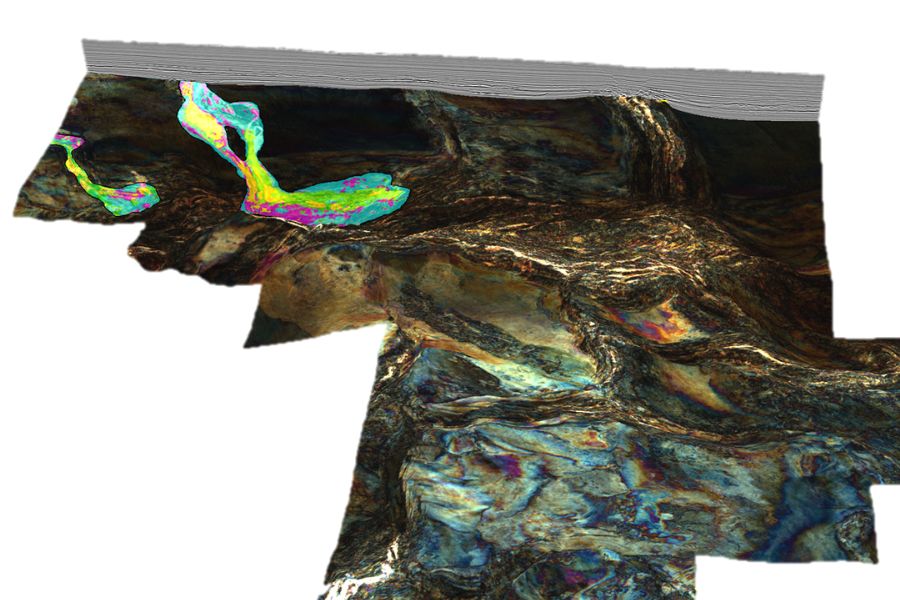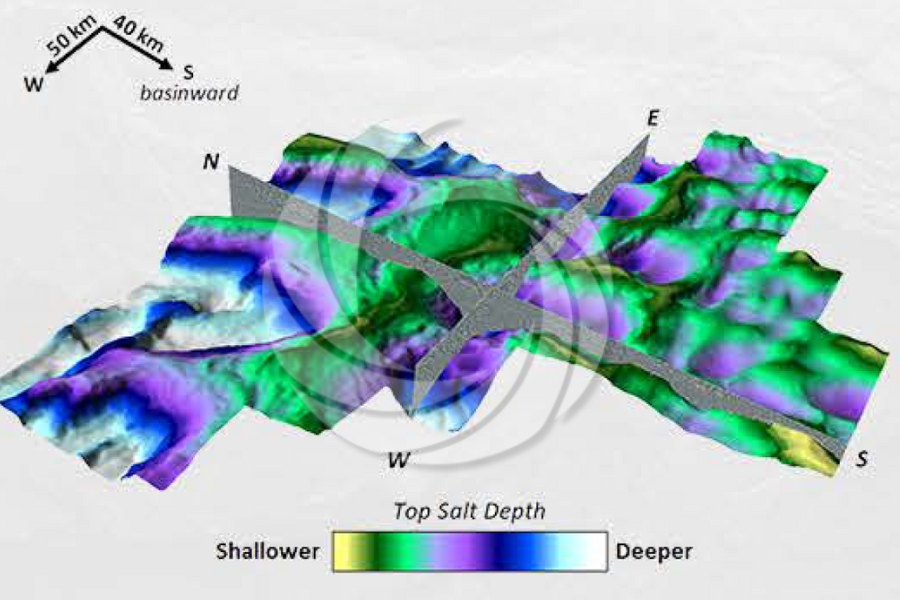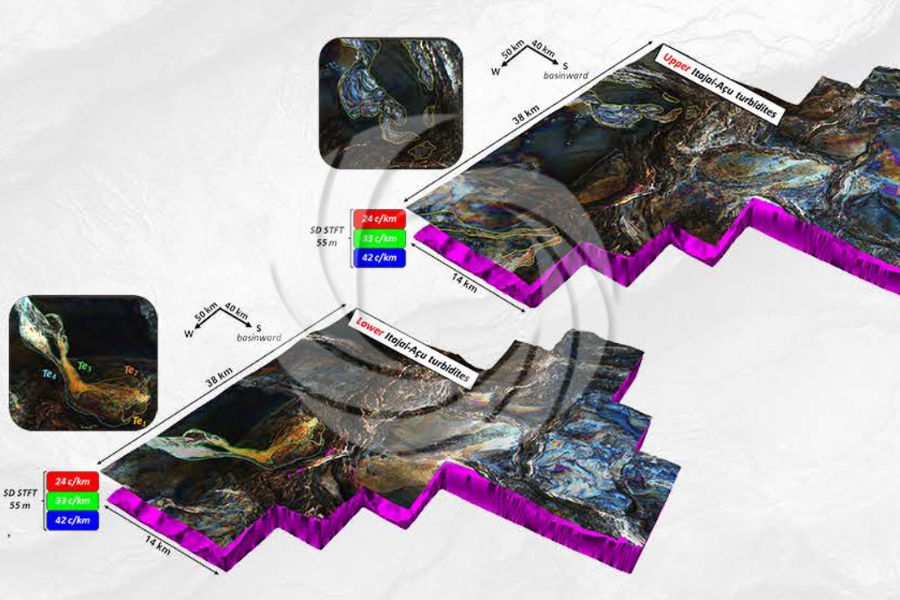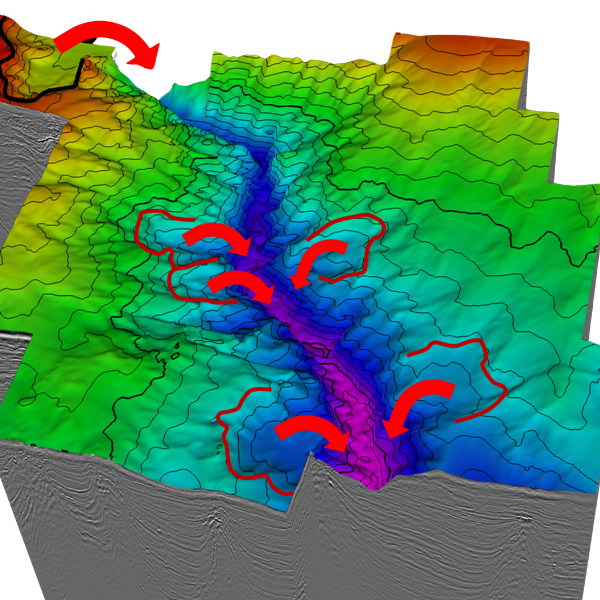REVIVING COMPLEX DATA WITH AI-ASSISTED INTERPRETATION
CASE STUDY: SANTOS BASIN

The integration of RGT modeling and Artificial Intelligence drastically accelerates the detailed tectono-stratigraphic analysis of sedimentary basins and thus enables fast seismic data portfolio revision.
CASE STUDY AT A GLANCE

LOCATION
Búzios Field, Santos Basin, Offshore Brazil

SURFACE AREA
1,255 KM2

AGE OF SEDIMENT
Lower Cretaceous to Upper Cretaceous

GEOLOGICAL CONTEXT
Salt-controlled minibasins, post-rift drift tectonics

DEPOSITIONAL ENV.
Deep marine

MAIN CHALLENGES
Modeling of salt and diapirism-related faults; emphasis and characterization of turbidite sand fairways
LOCATION
The Santos Basin is located offshore southeastern Brazil, spanning deepwater areas along the Atlantic margin and encompassing key fields such as Búzios and Franco.
AUTHOR

Nicolas Daynac
Advisor - Principal Geoscientist - Technical Excellence
SYNOPSIS
The Santos Basin, located offshore southeastern Brazil, is one of the world’s most productive offshore hydrocarbon provinces. While pre-salt reservoirs have dominated exploration for decades, improved seismic imaging and AI-driven stratigraphic analysis have revived interest in the post-salt section, particularly in areas shaped by halokinesis and faulting.
In this case study, PaleoScan™ was used to analyze a structurally complex post-salt sequence in the Búzios Field area. An AI-assisted workflow enabled detailed extraction of salt bodies and fault surfaces, which then constrained signal-driven RGT modeling. This resulted in a stratigraphically and structurally consistent 3D framework. Spectral decomposition and waveform classification were applied to highlight and characterize confined turbidite sand fairways. The integration of geobody extraction, multi-attribute analysis, and machine learning revealed how salt tectonics influenced turbidite stacking patterns, sediment confinement, and channel distribution—offering valuable insights into reservoir potential beyond the pre-salt plays.
KEY TOPICS
- AI-assisted salt and fault extraction using GeoSeg, FaultAssist, and AFE
- Structurally constrained RGT modeling of post-salt sequences
- Sub-sample resolution stratal slicing and spectral decomposition
- Geobody detection and waveform classification using Self-Organizing Maps (SOM)
- Salt tectonics and its influence on turbidite system architecture and confinement

AI-assisted structural and geobody interpretation

RGT-empowered multi-attribute analysis

Hybrid quantitative / interpretative characterization
READY TO DIVE DEEPER? DOWNLOAD THE FULL CASE STUDY BELOW!






